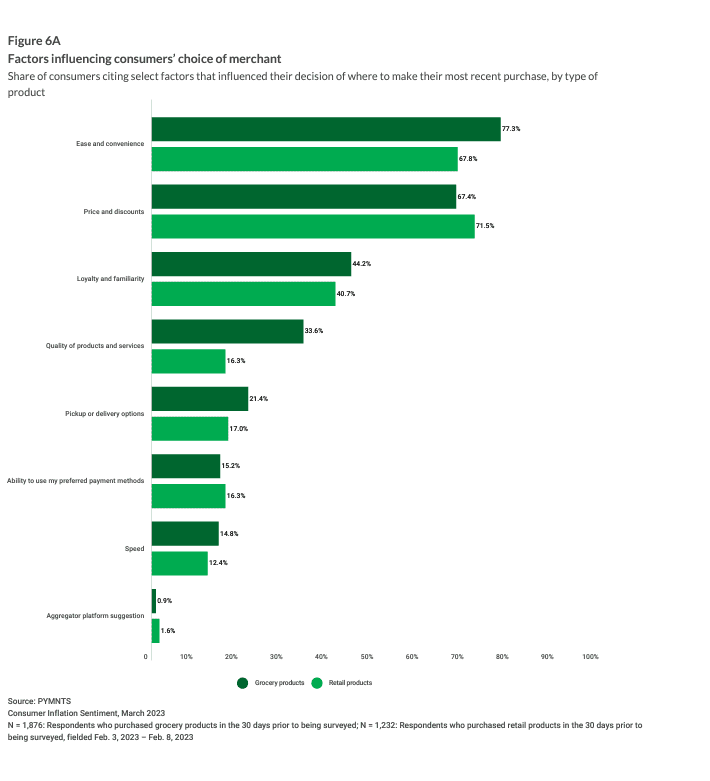
Grocers may find increased loyalty catering to the wants of shoppers making choices based on more than just deals.
With the cost of groceries 11% higher than last year, it seems like all shoppers are seeking deals. Chasing this growing group of deal-seekers initially makes sense, as they now make up 44% of all U.S. consumers. Appealing to the majority shopper behavior may get the most customers in the door. However, this may be a mistake as deal-seekers are doing just that: seeking deals, excluding any other loyalty efforts.

Another 17% of shoppers already identify as brand-loyal, leaving the remaining consumers, which PYMNTS has dubbed the persuadable or “malleable middle.” Persuadables represent the sweet spot in customer retention. They can be attracted by low prices yet are also influenced by other factors, meaning that pickup or delivery options and other conveniences can motivate them to become profitable customers. A more sustainable, long-term loyalty strategy may be found in catering to this group. PYMNTS’ latest, “Consumer Inflation Sentiment: The False Appeal of Deal-Chasing Consumers,” reflects the factors influencing where consumers choose to shop.
A significant share of surveyed consumers cites ease and convenience as factors influencing their most recent in-store grocery purchases. That may indicate the possibility of retention options for grocers beyond simply slashing prices. The right strategy might even mean converting some of these persuadable into repeat customers with a balance of competitive prices, stocked inventory and conveniences such as curbside pickup.
In an interview with PYMNTS, Bank of America Senior Vice President of Product Management Nicolle Wilson explains the importance for brick-and-mortar retailers such as grocers to maintain these loyalty-led customer conveniences. “It keeps those brick-and-mortar locations relevant in a very digital age. Merchants are reporting steady growth in it still. Some industries have seen kind of an uptick and then kind of a leveling off, but if consumers like it, merchants are going to continue to offer it … And the main benefit is customer satisfaction. Customers enjoy the flexibility of getting those goods however best suits them that day, and merchants have seen an increase in customer loyalty.”
As even higher-income consumers switch merchants offering bargains, it may be tempting for grocers to seek retention from these deal-seekers. However, it may ultimately be more profitable to appeal to the persuadables, who, with the right strategy, could turn into loyal shoppers.